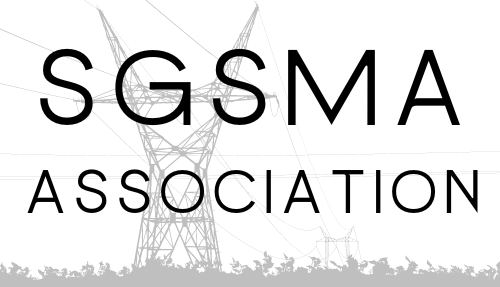Impact, advancement, and challenges of clock synchronization on PMUs and their applications
Date: Thursday, May 27 Time: –
Add to calendar: Webinar8.ics
 Name and title of the speaker: Prof. David Macii
Name and title of the speaker: Prof. David Macii
Email: david.macii@unitn.it
Organisation: University of Trento
Biography of the speaker:
David Macii (david.macii@unitn.it) was born in Perugia, Italy, in 1974. He received a 5-year (B.S.+M.S.) Degree (summa cum laude) in Electronic Engineering and the Ph.D. Degree in Information Engineering from the University of Perugia in 2000 and 2003, respectively. Also, he received the Master Degree of Advanced Studies in Embedded System Design from the University of Lugano, Lugano, Switzerland, in 2005. David Macii worked as FPGA designer at the German Aerospace Centre DLR, Oberpfaffenhofen, Germany, in 2000. He was a visiting Ph.D. Student at the Department of Electronic Network and Computer Engineering (DSP and VLSI group) of the University of Westminster, London, UK, between 2002 and 2003. Afterwards, he was a research fellow at the University of Trento, Trento, Italy and a visiting researcher at the Advanced Learning and Research Institute (ALARI), Lugano, Switzerland, between 2003 and 2005. Between 2005 and 2012 he was an Assistant Professor first with the Department of Information Engineering and Computer Science and then with the Department of Industrial Engineering of the University of Trento. Between 2009 and 2010, he was at the Berkeley Wireless Research Centre (BWRC) of the University of California Berkeley, CA, USA, as a Fulbright Research Scholar. At the moment he is an Associate Professor with the Department of Industrial Engineering of the University of Trento. He was the Coordinator of the Euro-regional mobility project “E3 – EUREGIO Training Network on Energy”. He was a keynote speaker at the “2nd International Conference on Measurement Instrumentation and Electronics” (ICMIE), Prague, Czech Republic, in 2017 for the talk “Distributed synchronous measurement systems for smart grids: opportunities and challenge” and an invited speaker at the “Workshop Engineering trends and business opportunities for smart cities,” Trento, Italy, in2016 for the talk “Energy management systems in the context of smart cities.” Also, he was General Co-chair, Publication Chair and Program Co-chair of the IEEE Workshop on Environmental, Energy and Structural Monitoring Systems (EESMS) in 2013, 2014 and 2015, respectively. David Macii is an Author or a Co-Author of about 150 papers published in books, scientific journals and peer-reviewed international conference proceedings. Among others, he received the best academic paper award as a co-author of the paper “A Clock State Estimator for PTP Time Synchronization in Harsh Environmental Conditions” presented at the ISPCS 2011 Conference, Munich, Germany, in 2011. His research interests comprise the design, implementation and characterization of digital signal processing algorithms and embedded systems for measurement applications, with a special emphasis on measurement techniques for smart grids and energy monitoring systems.
 Name and title of the speaker: Prof. Stefano Rinaldi
Name and title of the speaker: Prof. Stefano Rinaldi
Email: stefano.rinaldi@unibs.it
Organisation: University of Trento, University of Brescia, Italy
Stefano Rinaldi (stefano.rinaldi@unibs.it) was born in Seriate (BG), Italy, in 1982. He received the M.S. degree (summa cum laude) in electronic engineering and the Ph.D. degree in electronic instrumentation from the University of Brescia, Italy, respectively in 2006 and 2010. He is author or co-author of more than 150 scientific papers. In 2014, he joined the Department of Information Engineering of the University of Brescia where he is presently Senior Assistant Professor. Stefano Rinaldi received “Premio Carlo Offelli” in 2011 for the best Italian Ph.D. thesis in the field of electrical and electronic instrumentation assigned by the Electrical and Electronic Measurement National Scientific Society (GMEE). He received the best work in progress at ETFA 2008 for his studies about the coexistence of several synchronization techniques on industrial Real Time Ethernet networks. He received the best paper at the 2nd EAI International Conference on ICT Infrastructures and Services for Smart Cities, IISSC 2017. He is inventor of two national patents and one international patent. He takes part to IEEE 1588 standardization Working Group IEEE Standard for a Precision Clock Synchronization Protocol for Networked Measurement and Control Systems”, for the definition of the next release of IEEE 1588 protocol. He took part to NIST Cyber-Physical Systems Public Working Group (CPS PWG), on the topic of the time synchronization of cyber-physical systems. He was involved as reviewer of the final results of UNI-SET Energy Cluster Event project, funded by the European Union. His research activity is mainly devoted to: industrial real-time Ethernet network; communication in smart grids; wireless sensor network and smart sensors; time synchronization methods; Internet of Things; Smart Grid; Smart Buildings and Smart City; design of Field-Programmable Gate Array system-on-a-chip; Linux-embedded and real-time software development..
Abstract: As known, the magnitude, phase, frequency and rate of change of frequency (ROCOF) of voltage or current waveforms measured by a PMU have to be properly synchronized to the Coordinated Universal Time (UTC). Often, the signals used for clock synchronizaton (usually generated by a GPS receiver) are also used for syntonization, i.e. to discipline the PMU sampling rate. Of course, the clock synchronization fluctuations affect the waveform parameters to be estimated and they tend to accumulate when the PMU data are gathered, time-aligned and processed by a Phasor Data Concentrator (PDC). Therefore, an upper bound to clock synchronization uncertainty must be found to ensure not only that its contribution to the Total Vector Error (TVE), the frequency error (FE) and the ROCOF error (RFE) is kept under control, but also that the phase measurement errors are much smaller than the phasors inherent angle offsets measured in different points of the grid at the same time. While 1-us accuracy is currently regarded as a standard requirement at the transmission level, an extensive debate is currently ongoing on the synchronization requirements at the distribution level. The proposed webinar, after a brief introductory overview of clock synchronization, syntonization and their uncertainty contributions, first will provide a detailed analysis of how such uncertainty contributions affect PMU measurement results; then it will recall the typical clock synchronization techniques that can be adopted for PMU implementation as well. They usually include: classic GPS-based solutions, the IRIG-B protocol, the IEEE 1588 Precision Time Protocol (PTP) along with the PTP power profile (standardized as IEEE C37.238-2017) and software message timestamping and finally White Rabbit (referred to as “high-accuracy profile” in the IEEE Standard 1588-2019). This represents indeed the evolution of PTP when extreme accuracy is needed, as it requires hardware message timestamping and a real-time Ethernet infrastructure. A critical analysis of the advantages and disadvantages of such techniques with an outlook on some research works, activities and standardization efforts will complete the webinar.
